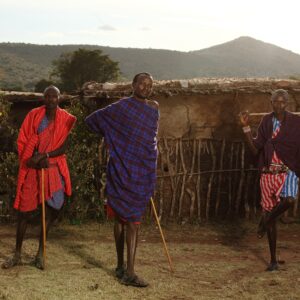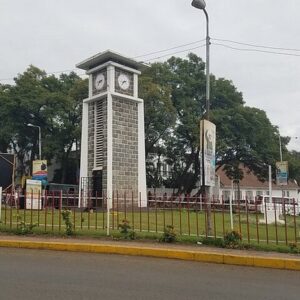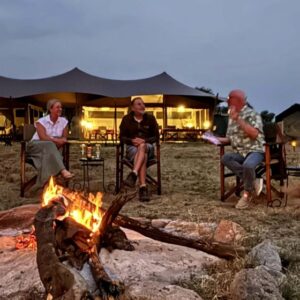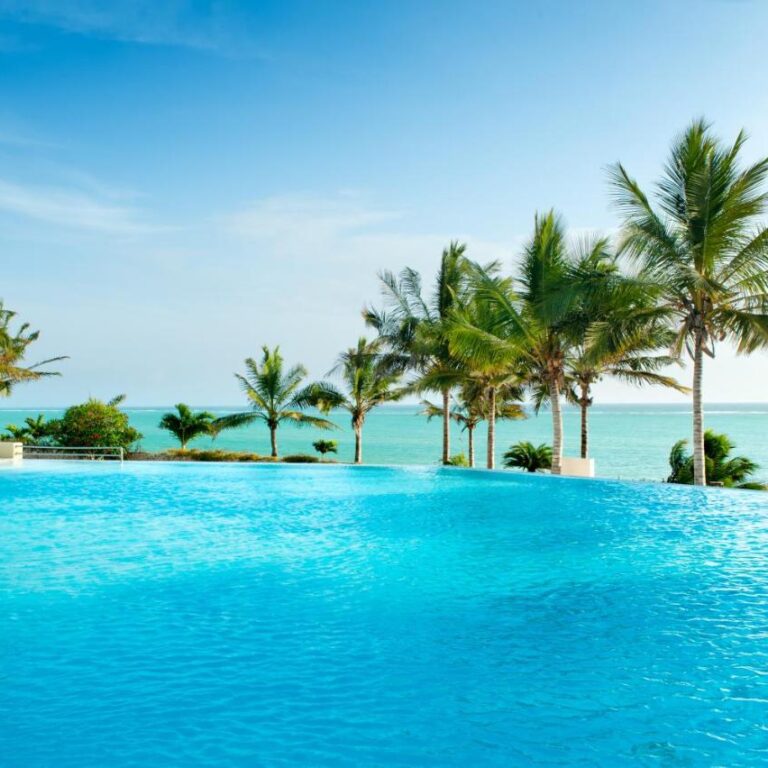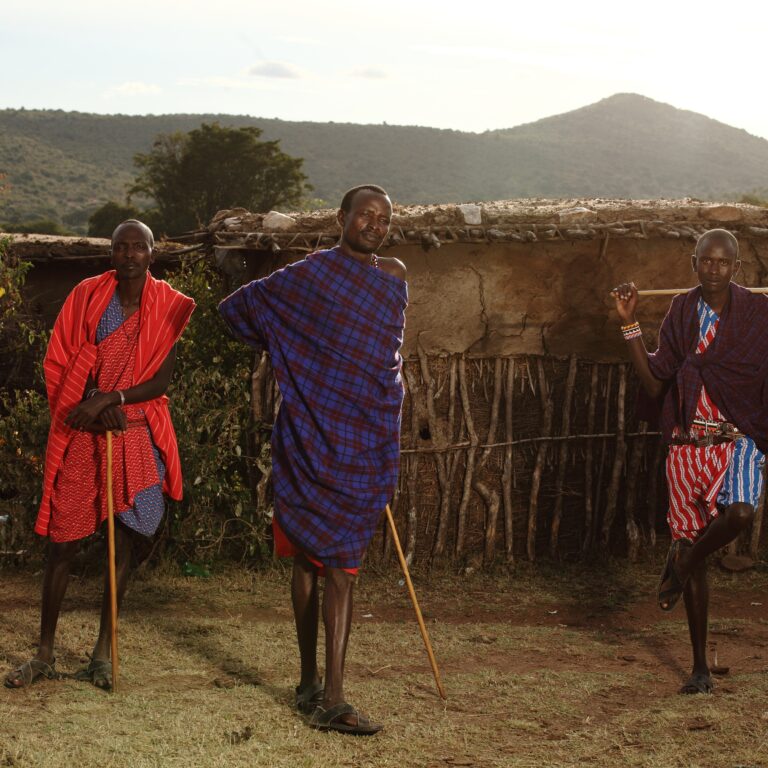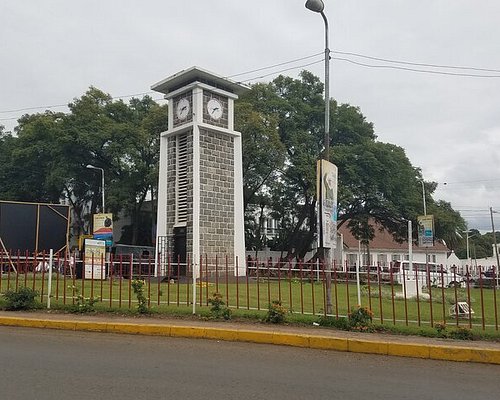October in Ngorongoro is a special time, a period of transition that offers a unique and unforgettable safari experience. As the dry season wanes and the short rains begin to tease the parched landscape, a sense of anticipation fills the air. The crater floor, a haven of wildlife, is a tapestry of muted golds and greens, a stark contrast to the verdant beauty that will soon follow. This is a time for the savvy traveler, the one who seeks to witness the raw, untamed beauty of nature before the crowds of the high season descend. October is generally an excellent time to visit the Ngorongoro Crater for wildlife viewing, marking the end of the dry season with sunny and clear conditions, though the very end of the month may see the start of short rains. Wildlife tends to congregate around diminishing water sources, making it easier to spot animals like lions, elephants, and rhinos, and birdlife is also active near key water sources like Lake Magadi.
Weather and Climate in Ngorongoro in October
Ngorongoro in October experiences a fascinating shift in weather patterns. The month marks the end of the long dry season and the beginning of the short rainy season, which typically runs from November to December. You can expect warm, dry days with temperatures averaging around 25 °C (77∘ F) and cooler nights, where temperatures can drop to 10 °C (50∘ F) or lower, especially on the crater rim. The air is generally clear, offering spectacular views of the crater and its inhabitants. While the short rains may start, usually in the form of brief, afternoon showers that rarely disrupt safari activities. The landscape, though dry, not yet barren, and the dust is manageable.
Why Visit Ngorongoro in October?
Visiting Ngorongoro in October its a strategic choice for several reasons. Firstly, it offers a “shoulder season” experience. The peak crowds of the long dry season (July to September) have thinned out, but the landscape is still beautiful and the wildlife viewing is excellent. This means fewer vehicles vying for the best spots to view a lion kill or a black rhino sighting. Secondly, the weather is pleasant. The searing heat of the dry season is subsiding, and the brief showers bring a refreshing coolness to the air. The skies, often dramatic with gathering clouds, provide a stunning backdrop for photography.
Where to Go & What to Do in October
The main event in Ngorongoro, of course, the Ngorongoro Crater. This UNESCO World Heritage site, a natural wonder, a collapsed volcano teeming with an incredible density of wildlife. A day trip into the crater is a must-do. You can spend the day on a game drive, searching for the “Big Five” (lion, leopard, elephant, buffalo, and black rhino) and a myriad of other animals. Beyond the crater, you can explore the Empakaai Crater, a smaller, more remote caldera with a stunning soda lake at its base. The hike down to the lake is a rewarding experience, offering a different perspective of the landscape and the chance to see flamingos. The Olmoti Crater, another option, known for its beautiful waterfalls. For a cultural immersion, a visit to a local Maasai village is highly recommended. You can learn about their traditions, witness their vibrant dances, and purchase their handcrafted jewelry.
Wildlife & Animals – Ngorongoro in October
October is an excellent month for wildlife viewing in Ngorongoro. The animals are still concentrated on the crater floor, drawn to the permanent water sources. The grassy plains are home to large herds of wildebeest, zebra, and gazelle. Predators like lions, hyenas, and cheetahs are often seen stalking their prey. The Ngorongoro Crater is one of the best places in Africa to see the critically endangered black rhino. Elephants, though not as numerous as in other parks, can be spotted, as can hippos and a wide variety of birdlife, including flamingos on Lake Magadi.
Crowds & Costs – Ngorongoro in October
October is generally considered part of the dry season in Ngorongoro, making it a popular and good time for wildlife viewing due to sparse vegetation and concentrated wildlife near water sources. However, being late in the peak season, it can still be quite crowded and associated with higher costs compared to the low season. As a shoulder season month, October offers a sweet spot in terms of crowds and costs. The prices for safaris and accommodations are typically lower than in the high season, but higher than in the low season (the long rains). You can find better deals on lodges and tours, and you won’t have to contend with the large number of vehicles that pack the crater during the peak months. This allows for a more intimate and peaceful safari experience.
What to Pack – Ngorongoro in October
For a safari in Ngorongoro in October, pack lightweight, breathable clothing in neutral colors, along with warm layers for cool mornings and evenings, and essentials like a wide-brimmed hat, sunglasses, sunscreen, and insect repellent. October falls within the “short rainy season” (September to November), but mornings and evenings, especially at Ngorongoro’s high altitude, can still be quite chilly, with temperatures potentially dropping to 10-15°C (50-59°F). Given the varying temperatures, layering its key. Pack light, breathable clothing for the daytime, and a warm jacket or fleece for the chilly mornings and evenings on the crater rim. A hat, sunglasses, and sunscreen are essential for sun protection. Don’t forget comfortable walking shoes if you plan on doing any crater rim walks or hikes. A good camera with a zoom lens its a must-have, as are binoculars for spotting distant wildlife.
Ngorongoro Accommodations in October
Ngorongoro offers a range of accommodations to suit every budget, from luxury lodges perched on the crater rim to more rustic tented camps. The lodges on the rim, such as the Ngorongoro Serena Safari Lodge or the Ngorongoro Crater Lodge, offer breathtaking views and a luxurious experience. For a more budget-friendly option. There lodges and campsites just outside the conservation area in the nearby town of Karatu. Booking in advance is always a good idea, even in the shoulder season, to secure your preferred accommodation.
Getting to Ngorongoro Crater in October
To get to the Ngorongoro Crater, the most common route, to fly into Kilimanjaro International Airport (JRO) or Arusha Airport (ARK), then travel by road or light aircraft to the Ngorongoro Conservation Area. From Arusha, the drive to the crater takes about 3-4 hours by road, or a shorter flight to a nearby airstrip. Most visitors choose to book a safari tour that includes transportation and often an experienced guide. The most common way to get to Ngorongoro its by a safari vehicle from Arusha, the safari hub of northern Tanzania. The drive takes approximately three to four hours. You can also fly into the nearby Lake Manyara Airstrip and be picked up by your safari guide. Your safari operator will handle all the logistics, including park fees and crater descent permits.
What to Expect – Ngorongoro in October
October in Ngorongoro offers a mixed bag, it’s the tail end of the dry season with generally sunny days and excellent wildlife viewing opportunities, but it’s also peak safari season with more crowds and potentially the first signs of the short rains arriving towards the end of the month. You can expect average daily temperatures around 18°C (65°F), with highs reaching up to 27°C (81°F) and lows dipping to 11°C (52°F), and it can still get quite chilly on the crater rim in the mornings and evenings, especially when temperatures can freeze. In October, you can expect a mix of dry and wet weather, with occasional afternoon or evening showers. The landscape, in a state of transition, with the golden-brown dry season scenery starting to give way to the lush greens of the upcoming rainy season. The air is clear, offering stunning views, and the wildlife is abundant and active. You can also expect a more relaxed safari experience with fewer crowds. In October, you can expect a mix of dry and wet weather, with occasional afternoon or evening showers. The landscape begins to transform with the onset of the short rains, creating a beautiful, verdant backdrop for wildlife viewing.
Things to do in Ngorongoro in October
October is within the dry season in the Ngorongoro Conservation Area, making it an excellent time for wildlife viewing due to concentrated animal populations around water sources and clear views. Popular activities include game drives in the Ngorongoro Crater, walking safaris near the crater rim, picnic adventures, and visiting Olduvai Gorge. In addition to game drives, consider a guided walk along the crater rim to appreciate the scale and beauty of the caldera from a different perspective. A visit to a Maasai village offers a glimpse into their fascinating culture and traditions. For history buffs, a stop at Olduvai Gorge, the “Cradle of Mankind,” is a must.
Interesting fact about Ngorongoro Crater
The Ngorongoro Crater, also known as the world’s largest unbroken caldera. A massive volcanic crater formed by the collapse of a volcano millions of years ago. It’s a UNESCO World Heritage Site renowned for its incredible biodiversity, hosting a very high density of wildlife, including the Big Five and the world’s highest density of lions, though notably, it does not contain giraffes. The Ngorongoro Crater is the world’s largest unflooded, unbroken volcanic caldera. Its walls rise to over 600 meters, creating a natural enclosure for an incredible concentration of wildlife, including the highest density of lions in Africa. The name “Ngorongoro” its an onomatopoeic word derived from the Maasai language, believed to have originated from the sound of the cowbell.
Best time to visit Ngorongoro Crater
The best time to visit Ngorongoro, often considered the dry season from June to October, as the shorter grass makes wildlife easier to spot. However, the wildlife viewing excellent year-round. The shoulder seasons, like October, offer a perfect balance of good weather, excellent wildlife viewing, and fewer crowds. Book private individual tailor-made Ngorongoro Crater family, honeymoon/couple, seniors, solo travelers, holiday, luxury, mid-range tented camp, budget camping, expedition, adventure safari packages all-inclusive, see photos, Map, reviews, prices, and cost save up to 20% best-selling trips!
Tips and ultimate guide to Ngorongoro Crater
To make the most of your Ngorongoro Crater safari, plan your visit during the shoulder seasons (April-May, November) to save money and avoid crowds, consider staying in nearby Karatu or public campsites for budget-friendly options, and book with local operators for potentially better rates. Essential tips include an early morning start for optimal wildlife viewing, packing layers of clothing for unpredictable weather, neutral-colored attire to blend in, and insect repellent and sunscreen for sun and mosquito protection.
Book in advance. October still a popular time, so book your safari and accommodation well in advance. Layer your clothing. The temperature varies greatly between day and night, and from the crater rim to the floor. Bring a good camera and binoculars. You’ll want to capture the incredible landscapes and wildlife. Listen to your guide. They have a wealth of knowledge about the animals, plants, and culture of the region.
Be prepared for an early start. The best wildlife viewing often happens in the early morning. Stay hydrated. Drink plenty of water throughout the day. Respect the wildlife. Never get out of the vehicle unless instructed by your guide, and maintain a safe distance from the animals. Consider combining Ngorongoro with other parks. A Northern Circuit safari is a popular way to experience the best of Tanzania’s wildlife.
What makes the dry season the best time for a safari in the Ngorongoro Crater? The dry season, which spans from June to October, offers numerous advantages for safari enthusiasts. The scarcity of water compels animals to gather around the remaining watering holes, resulting in exceptional wildlife sightings. The clear skies and thinner vegetation during this period enhance visibility, making it easier to spot elusive animals against the breathtaking backdrop of the crater.
Will I still see wildlife in Ngorongoro crater during the wet season? Yes, you can still enjoy remarkable wildlife encounters during the wet season, which lasts from November to May. While the animal sightings may be more dispersed due to the availability of water sources throughout the crater, the lush landscapes and vibrant vegetation create a stunning setting for your safari adventure. Additionally, the wet season attracts a plethora of bird species, delighting birdwatchers with their colorful plumage and melodious calls.
How does the weather differ between the dry and wet seasons? The dry season is characterized by warm and sunny days, with temperatures averaging around 70 to 80 degrees Fahrenheit (21 to 27 degrees Celsius). Mornings and evenings can be cooler, so layering your clothing is advisable. In contrast, the wet season experiences refreshing rains that rejuvenate the landscapes. Daytime temperatures range from 70 to 85 degrees Fahrenheit (21 to 29 degrees Celsius), offering pleasant safari conditions.
Is the Ngorongoro Crater crowded during the dry season? The dry season is generally more popular among tourists due to the optimal wildlife sightings. As a result, the Ngorongoro Crater may experience higher visitor numbers during this period. If you prefer a quieter and more intimate safari experience, you may consider planning your visit during the wet season when crowd levels are typically lower.
Are there any budget considerations when planning a safari to the Ngorongoro Crater? Accommodation rates and safari prices can vary throughout the year. The high season, which corresponds to the dry season, often sees higher prices due to the increased demand. If budget is a significant factor for you, exploring the wet season options might offer more affordable choices while still providing a remarkable safari experience.
Can I capture stunning photographs during my Ngorongoro Crater safari? Absolutely! The Ngorongoro Crater presents endless opportunities for capturing breathtaking photographs. The diverse wildlife, picturesque landscapes, and dramatic lighting conditions make it a paradise for photography enthusiasts. Whether you visit during the dry season or the wet season, be sure to have your camera ready to immortalize the remarkable moments you encounter.
How can I maximize my Ngorongoro Safari experience regardless of the season? Irrespective of the season you choose, there are a few tips to enhance your Ngorongoro Crater safari experience. First and foremost, book your safari with a reputable tour operator that provides knowledgeable guides and comfortable accommodations. Their expertise and experience will ensure that you make the most of your time in the crater. Additionally, be patient and observant during your game drives, as wildlife sightings can be unpredictable. Finally, immerse yourself in the unique culture of the region by engaging with the local Maasai community and learning about their traditional way of life.
Final thought
A trip to Ngorongoro in October, a journey into the heart of the wild. It’s a time of transition, offering a unique blend of excellent wildlife viewing, beautiful scenery, and a more relaxed, less crowded atmosphere. With its pleasant weather and good value for money, October is the perfect month for a memorable and authentic safari adventure.


